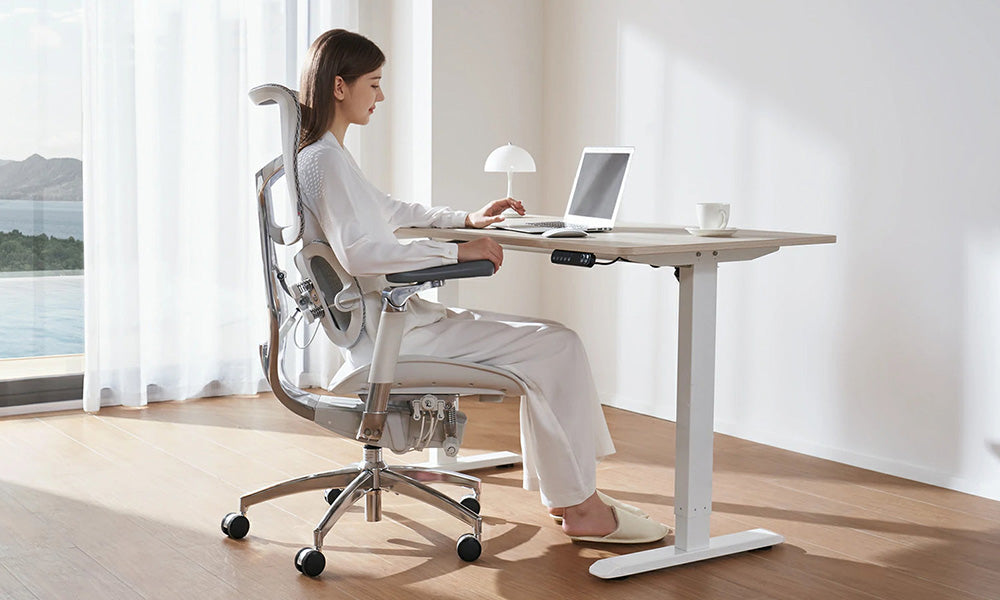The modern workplace is often dominated by long hours spent hunched over a computer screen. While technology has brought undeniable benefits, it's also introduced new health concerns. One such concern is the negative impact of prolonged sitting on our bodies.
This article explores the benefits of incorporating standing into your workday and provides a practical guide on how to allocate your working time between sitting and standing for optimal health and productivity.
The Downside of Sitting for Too Long
Research suggests that extended periods of sitting are linked to several health issues. These include:
- Increased risk of chronic diseases: Studies have found a correlation between excessive sitting and an increased risk of heart disease, type 2 diabetes, and some cancers.
- Musculoskeletal problems: Sitting for long stretches can strain your back, neck, and shoulders, leading to pain and discomfort.
- Poor circulation: Sitting can restrict blood flow, causing leg swelling and fatigue.
- Reduced cognitive function: Studies suggest a link between prolonged sitting and decreased memory and focus.
The Benefits of Standing Desks
Standing desks have emerged as a popular solution to combat the negative effects of excessive sitting. Here's why standing throughout the day offers significant benefits:
- Improved blood flow: Standing helps circulate blood more efficiently, reducing fatigue and leg swelling.
- Enhanced posture: Standing promotes a more natural spinal alignment, which can alleviate back pain and discomfort.
- Increased calorie burning: Standing burns slightly more calories than sitting, aiding in weight management.
- Boosted energy levels: Studies suggest standing can improve alertness and focus, potentially leading to increased productivity.
Finding the Right Balance: How Much Should You Stand?
While standing offers advantages, it's important to find the right balance between sitting and standing. Here are some guidelines:
- Start gradually: If you're not accustomed to standing for long periods, begin with short intervals (15-30 minutes) and gradually increase them throughout the workday.
- Listen to your body: It's perfectly normal to experience some discomfort as your body adjusts. Take breaks and sit down as needed. Aim for comfort, not an arbitrary time target.
- The 50/25 rule: A popular recommendation is the 50/25 rule: stand for 50 minutes, then sit for 25 minutes. You can adjust these intervals based on your comfort level.
- Focus on activity: Standing still isn't the only option. Consider incorporating light movement throughout your workday, such as walking during phone calls or stretching while standing.
Making Standing Desks a Success: Practical Tips
To maximize the benefits of a standing desk and create a comfortable workspace, consider these tips:
- Invest in an adjustable standing desk: This allows you to easily switch between sitting and standing positions throughout the day.
- Get an anti-fatigue mat: Standing on a firm but comfortable mat can help ease pressure on your feet and legs.
- Ergonomics are key: Ensure your monitor and keyboard are positioned at proper heights for both sitting and standing postures.
- Invest in a standing desk converter: If you can't purchase an entirely new desk, consider a standing desk converter that sits on your current desk, allowing you to modify your working height.
- Stay hydrated: Standing can increase water loss. Ensure you're drinking enough fluids throughout the day.
- Wear supportive shoes: Comfortable, supportive shoes are vital for standing for extended periods.
Beyond the Desk: Additional Strategies for Movement
While standing at a desk offers advantages, it shouldn't be the only solution. Here are additional strategies for incorporating movement into your workday:
- Take walking breaks: Get up and walk around every hour or two. Consider scheduling walking meetings or phone calls.
- Stretch regularly: Stretching throughout the day can improve circulation, reduce tension, and maintain proper posture.
- Use a stability ball: Consider using a stability ball instead of a traditional chair for short periods. This strengthens core muscles and encourages subtle movements.
- Stand during meetings: If possible, suggest standing meetings or use a stand-up collaboration space in your workplace.
Conclusion: A Balanced Approach to Work
The key takeaway is to find a balance between sitting and standing throughout your workday. By incorporating the strategies mentioned above, you can create a more ergonomic and healthy work environment that promotes better health, increased energy levels, and potentially, improved productivity. Remember, listen to your body, prioritize comfort, and gradually integrate movement into your work routine.



